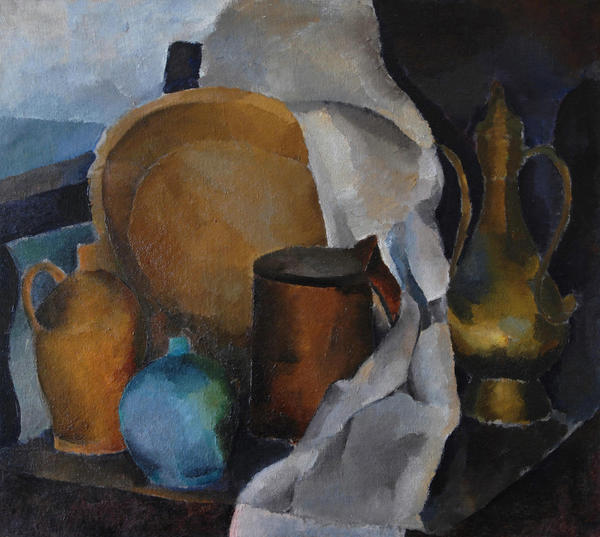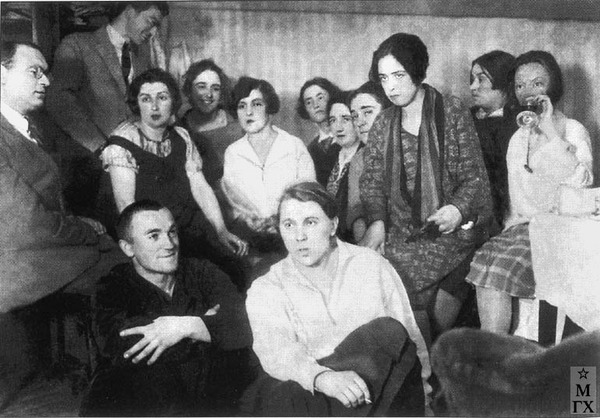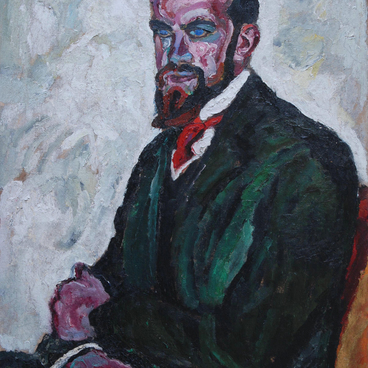The still life presented here is the only work which has survived to this day by Melita Nikoladze, an avant-garde artist of the first half of the 20th century. The painting came to Vladimir in 1921 from the Museum of Painting Culture, when the city organised the first museum of contemporary art. During the transfer of the painting, the State Art Fund designated it as a student work, that is why the researchers believe that Nikoladze painted the still life during her studies at the State First Free Art Workshops.
#1

Melita Nikoladze
Still Life
#2
#8
Art historians point out that this picture enables us to appreciate the fact that the very young artist already acquired the feeling of colour, as well as the ability to build a clear composition.
#9
The light drapery in the centre of the canvas is broken in a way that it creates the illusion of a tangible volume. Such a method of still-life construction was typical of many avant-garde works of the beginning of the XX-th century.
#12
Experts also note that Nikoladze’s still life was influenced by the creative perception of her teacher Vassily Rozhdestvensky, a painter and graphic artist. The painting demonstrates elements of cubism, which inspired Rozhdestvensky, as well as the method of “sculpting” the shapes of the objects with color combinations, typical of his works.
#10
There is very little we know about Melita Nikoladze’s life and work. She was born into a creative family. Her father was a journalist and public figure, her mother was a translator and member of the Writers' Union. And her uncle, Yakov Nikoladze, is considered the founder of modern Georgian sculpture.
#11
Melita Nikoladze graduated from the Gedda Mushnikova Petrograd (now, St. Petersburg) Gymnasium after which she went to study at the State First Free Art Workshops. Nikoladze studied at the fresco workshop under Vassily Rozhdestvensky in 1918-1919, and later continued her studies at VKHUTEMAS (The Higher Art and Technical Studios) with Robert Falk. Only one photograph of the artist and her classmates taken at that time has been preserved.
#4

P.P. Falk is among the students of the Society of Socially-Active Artists (OKHO). 1927-1928. From left to right: 1st row - L. Denisov, I. Golubets; 2nd row - P.P. Falk, I. Leyzerov, Е. Levina-Rosenholtz, M. Nikoladze, G. Nazarevskaya, Е. Rozhkova, S. Veprintseva, L. Litvinenko, R. Rabinovich, R. Idelson and V. Lopatina
#7
The fate of the artist after the 1917 revolution was not easy. She had to scrape by on instable earnings, devoting limited time to creative work. In 1928, Nikoladze participated in the IV ROST (the Russian Telegraph Agency) exhibition in Moscow, where she presented the picture A Female Athlete. Visitors praised it as one of the most impressive works in the exposition. Further fate of this painting is unknown today.
читать дальшескрыть
00:00
00:00
1x
Still Life
Время создания
1918-1919
Размер
85,5x96,5 cm
Техника
canvas, oil
Коллекция
5
Открыть в приложении
Поделиться


